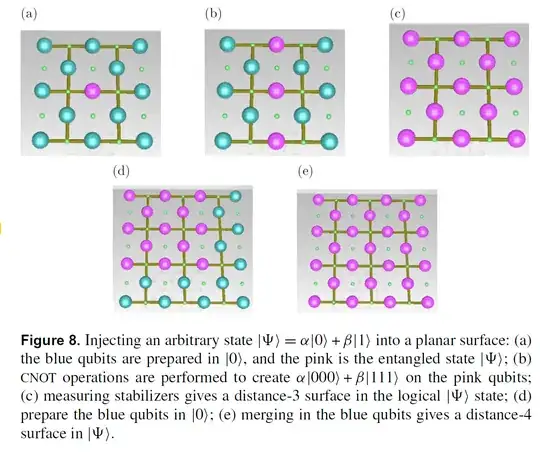In this paper: https://iopscience.iop.org/article/10.1088/1367-2630/14/12/123011, the authors describes how to inject a magic state into a small planar surface code, and then how to expand the code (see figures 8d and 8e). .
.
I cannot understand the expansion process. Since the additional qubits are initialized to the |0> state, a transversal ZZZZ operator (the logical Z) is a stabilizer of the system before and after the syndrome measurements. Therefore, the system must end in either the logical 0 or logical 1, and cannot be in any superposition.
Another point of view on my question is that the suggested process "measures" the original (pink) surface code in the z basis. If the original (pink) code is in the 0 logical state, the four bottom face syndrome measurements must give even parity. If the original code is in the 1 logical state, these four syndrome measurements must give an odd parity. this is because the bottom row of green qubits are initialized in the 0 state, and their multiplication with the original logical Z (and one another green qubit in the same row of the original logical Z) equals the parity of the four bottom face syndrome measurements.
We can therefore identify the original state of the code in the Z basis, so this is a measurement. But if this is a measurement, we are no more in a superposition, and the state injection procedure fails.
Where is my mistake?